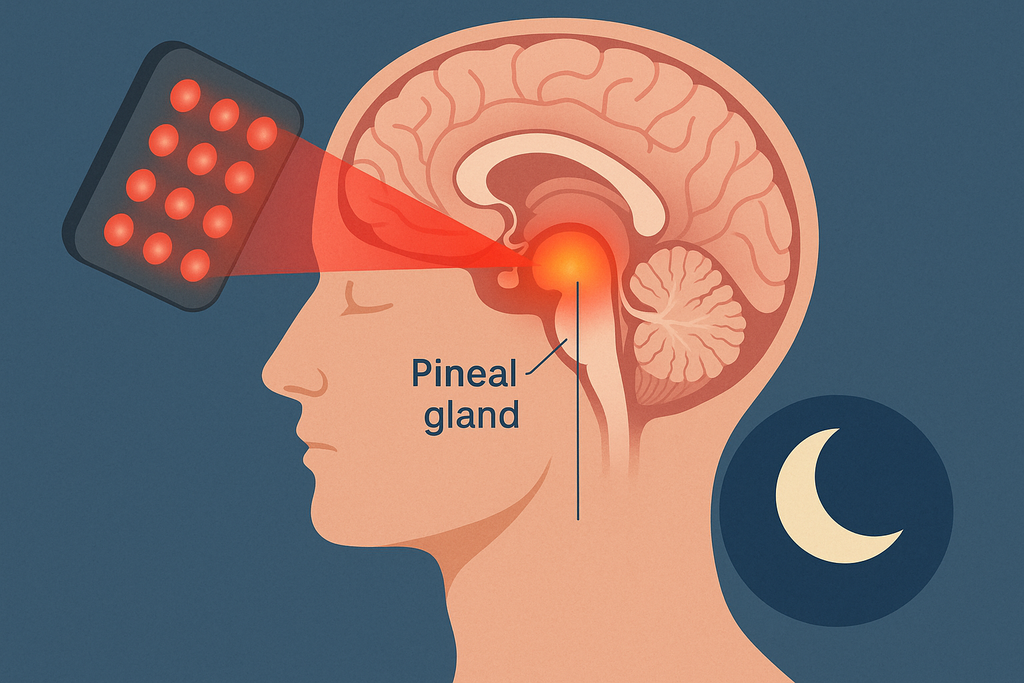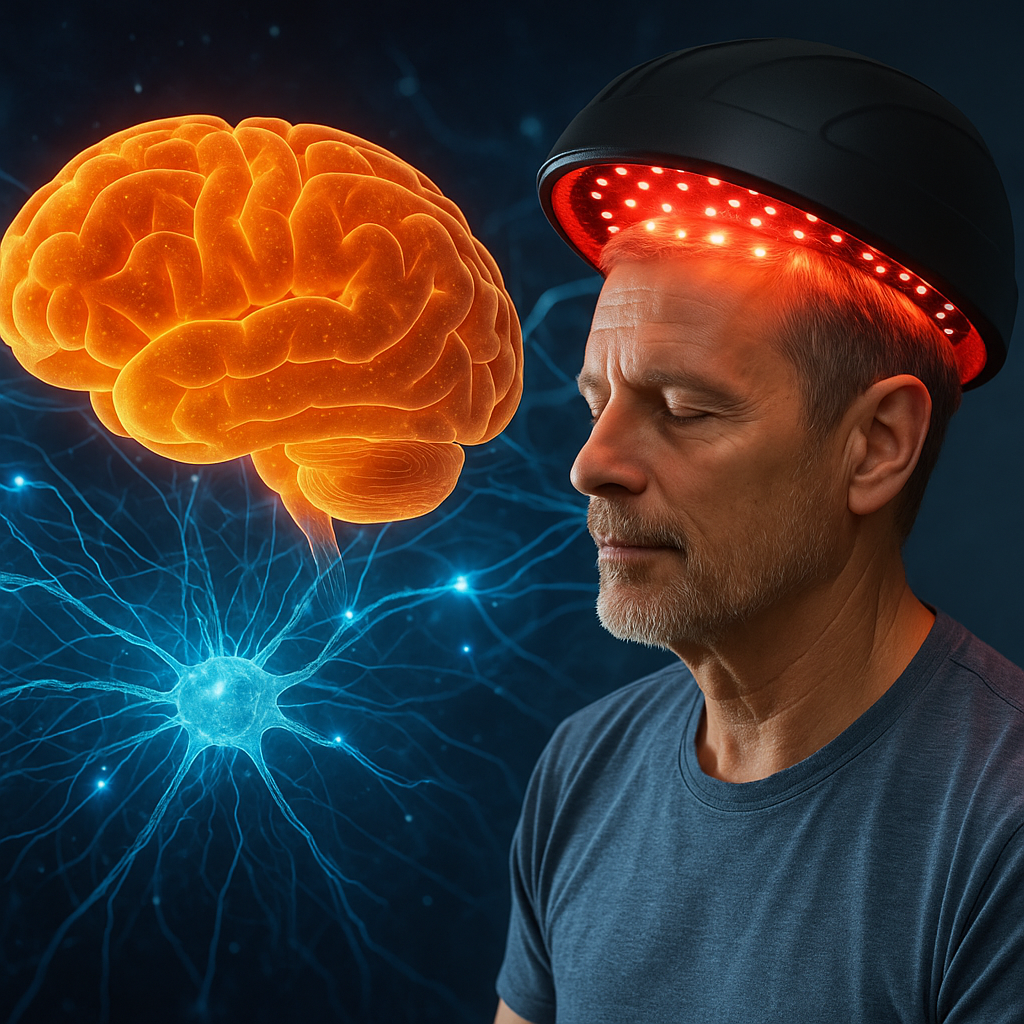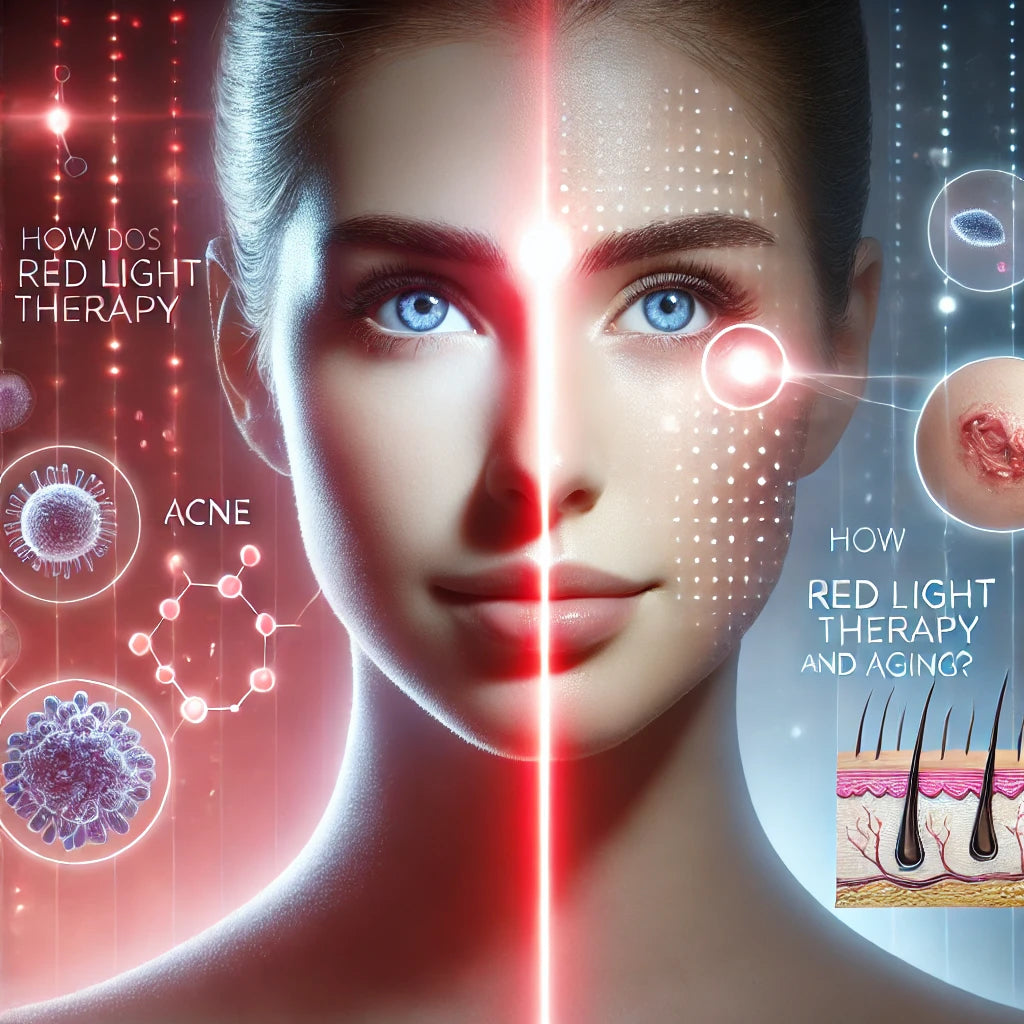News — red light therapy
Photobiomodulation: Boost Pineal Gland Function & Natural Melatonin Production
biohacking sleep brain health circadian rhythm holistic circadian support L-tryptophan supplement light and sleep light therapy for sleep melatonin production natural melatonin booster natural sleep solutions near-infrared light non-invasive sleep therapy PBM photobiomodulation pineal calcification pineal gland red light therapy sleep and mood sleep support third eye gland
As the world becomes increasingly aware of how light affects biology, photobiomodulation (PBM) has emerged as a breakthrough in non-invasive health optimization. PBM uses specific wavelengths of red and near-infrared (NIR) light to stimulate cellular function, reduce inflammation, and support tissue repair. But one of the most intriguing frontiers in PBM research is its potential to support the pineal gland—a small, mysterious organ deeply involved in our circadian rhythm and melatonin production.
Known as the body's “third eye,” the pineal gland governs our sleep-wake cycles, hormone regulation, and even our mood. When this gland becomes calcified or functionally impaired, it can disrupt melatonin output and lead to poor sleep, fatigue, and long-term health issues. Fortunately, research now suggests that targeted light therapy may enhance pineal gland function and promote natural melatonin production—offering a non-pharmaceutical path to better sleep and circadian balance.
How Photobiomodulation Therapy Supports Neurorehabilitation
ATP production brain healing brain inflammation brain injury recovery cognitive recovery light therapy brain LLLT low-level laser therapy mitochondrial healing neurodegenerative disease neuroplasticity neurorehabilitation neurotherapy PBM safety PBM therapy photobiomodulation red light therapy stroke rehabilitation transcranial laser therapy traumatic brain injury
Advances in neurological rehabilitation have taken a promising turn with the growing integration of light-based therapies, particularly photobiomodulation (PBM), also known as low-level laser therapy (LLLT). This non-invasive approach uses specific wavelengths of light to stimulate cellular repair, reduce inflammation, and enhance neuroplasticity—making it a novel tool in the recovery process for those with brain injuries, neurodegenerative diseases, and other neurological conditions.
By harnessing the power of red and near-infrared light, PBM can penetrate the skull and deliver energy directly to neurons and glial cells. Unlike surgical or pharmaceutical interventions, PBM works by modulating mitochondrial activity and cellular signaling pathways, facilitating a wide range of therapeutic outcomes. This article explores how photobiomodulation is transforming the landscape of neurorehabilitation, what the research says, and how it can be applied in clinical and home settings.
How Does Red Light Therapy Fight Acne and Aging?
acne treatment anti-aging collagen production inflammation reduction low-level laser therapy non-invasive skin treatment photobiomodulation red light therapy skin health skincare



